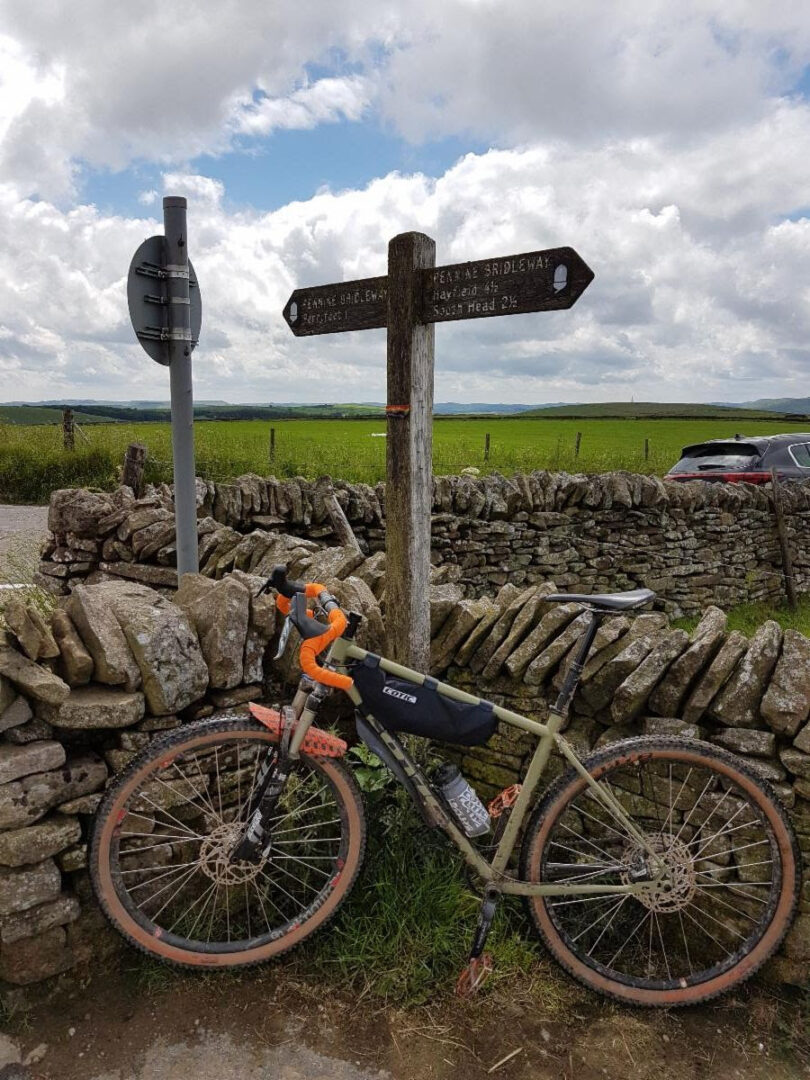Cotic has nailed its colours to its marketing mast by coming out against the new breed of gravel suspension products.

A newsletter from Cotic just arrived in our inbox with the strapline “Possible ranty handwaving content”. Apart from this strapline sounding like an excellent website tag for our future opinion columns, the newsletter contains some thought provoking statements.
Are you ready to have a Mrs Merton-style heated debate? Get yourself on down the comments section forthwith!
Cotic newsletter:
“You might have seen last month the launch of the Fox 32 TC gravel suspension fork. All 90s looks and mighty 40 or 50mm of travel. I haven’t ridden them, or their Ruby XPLR counterparts from Rockshox, but being old enough to have ridden suspension forks with 50mm of travel the first time around, I’m going to go out on a limb here and say I can’t see the point.
“uspension is one of those things where you really have to go full Yoda and “Do, or do not”. Despite obvious improvements in construction and damper technology since I was riding Judy XC’s and Pace MXCD’s in the mid-90s, fundamentally 40-50mm of travel simply isn’t enough stroke to take any meaningful impacts, and the setup will always be a bad compromise. Soft enough to ‘patter’ will have bigger hits smashing through, and firm enough for bigger hits will choke the small bump performance because of the lack of travel.
“This is why, whilst we always expected the Cascade to be mostly used fully rigid, when we decided we were going to offer suspension it would be a proper amount, using a properly stiff fork with enough room for a good damper. Even those basic X Fusion forks I have on my prototype up there [see pic above] were surprisingly handy at amplifying the offroad ability of the Cascade. The 100mm travel SID SL fork we offer with the production bikes is a whole other level of good.
“Limiting the travel doesn’t even save that much weight. It’s one of the truisms of bicycle suspension – more travel doesn’t actually weigh that much. It’s particularly apparent here. The weighed weight of the SID SL we have in stock is 36 grams more than the claimed weight of the Fox 32TC.
“Thirty.
“Six.
“Grams.
“For long distance comfort, proper damped control and the ability to do some pretty reasonable level mountain bike terrain all in the mix, I’ll take a SID equipped Cascade every day of the week. For less hectic riding? I’ll keep the Escapade with it’s carbon fork that weighs almost 1kg less than the Fox fork, with a nice light frame that hasn’t had to be beefed up for a longer, but still compromised, 40mm travel suspension fork.”
Our 2p
Perhaps the key phrase to bear in mind from the newsletter is “I haven’t ridden them”. We’ve not ridden gravel bounce very much at all either. Needless to say, we can still appreciate where Cotic is coming from.
Is this stance a bit overly grounded in mountain bike ethos and experience where the general level of amplitude and velocity are arguably significantly higher than your average gravelleur? Or is Cotic comparing 1990s bad apples with 2022 sophisticated oranges?
Essentially though, we’d like to hear what you think. Let us have your experiences, expectations, theories and outright prejudices about gravel suspension.







I am totally with Cotic. If I am paying money for suspension, dragging around weight, and needing to do maintenance, then it needs to offer some real benefits.
Especially, when, as Cotic points out, there is no real weight difference between 45 and 100mm of travel.
I love that my gravel bike is lightweight and doesn’t need maintenance or adjustment of suspension.
I would also love a full suspension gravel bike (drop bar mtb?) for certain routes.
It’s true, I have not ridden one. However, just riding a ‘gravel’ suspension bike alone is not enough. The real comparison needs to be between two similar bikes, one with ~45mm travel, and one with 100mm.
That’s what the industry needs to figure out.
This reminds me of when through axles became popular on trail bike suspension forks.
There was a perfectly good 20mm x 110 hub standard out there for DH forks. But instead, Fox had to go and introduce a new, less stiff, 15mm size.
Same with gravel bikes and 15mm through axles. They looked too fat and heavy, so now we have 12mm for the front of bikes that are getting beefier and beefier, both in looks and loads. Pretty soon, 15mm will look just right again.
My lynskey GR270 has a set of lauf grit sl’s up front, I got them below trade so was happy with that. There is no way I would pay RRP on a set of £850 forks that give only 30mm of suspension. They are nice on the trail but having done the French divide on them this year, I definately found their limit. Current gravel sus forks are fine for fire roads but any real rough stuff is beyond them. Anyway, you should be riding an mtb for real rough stuff